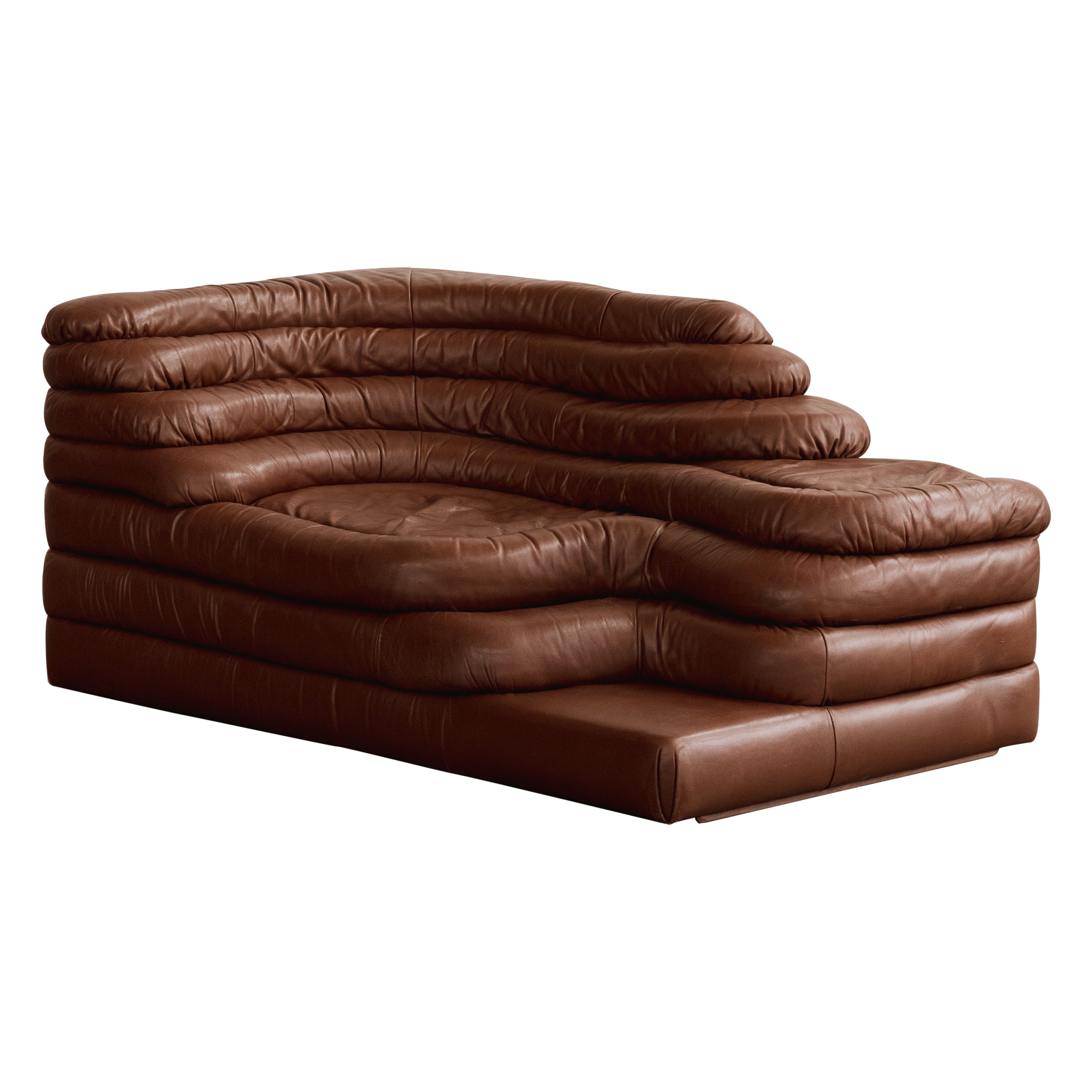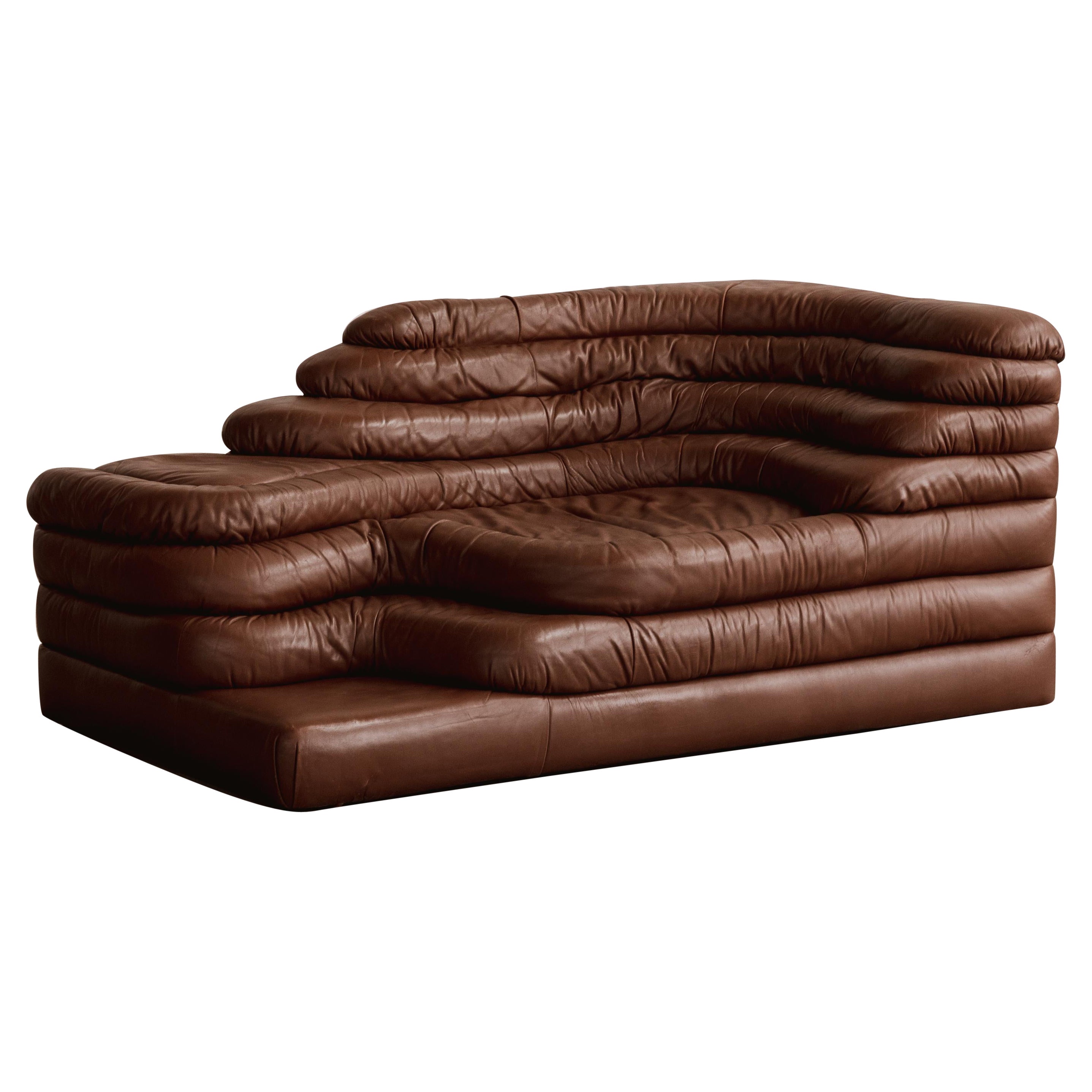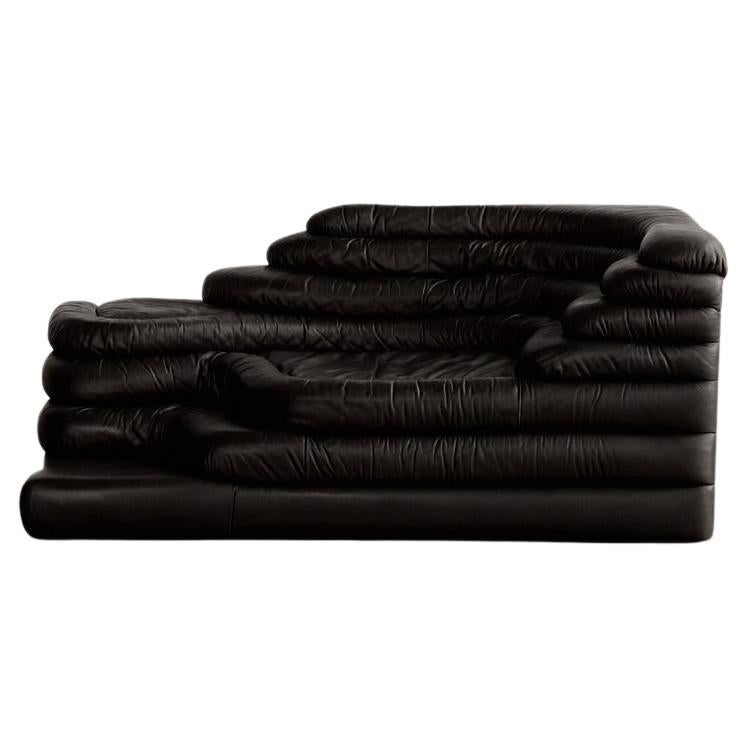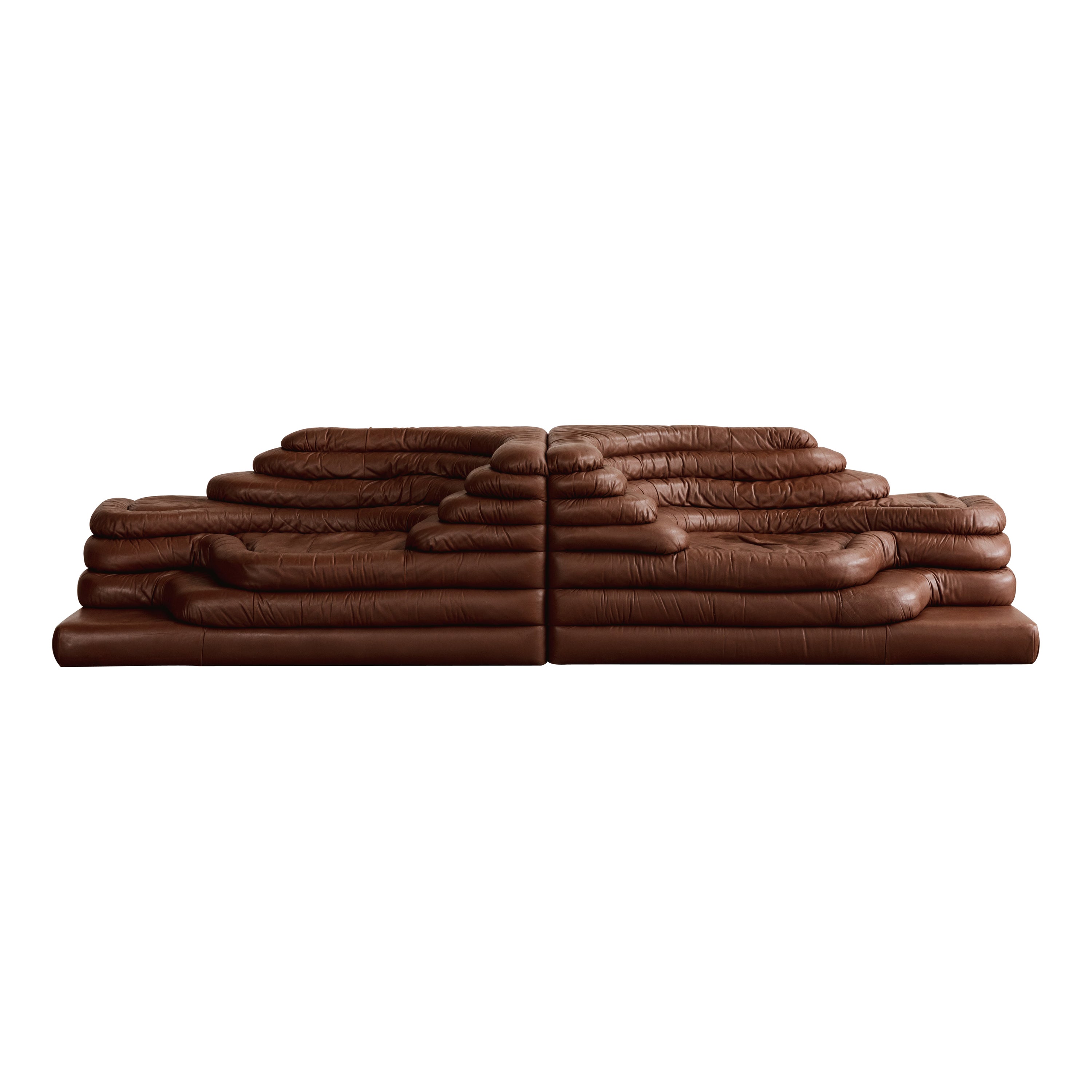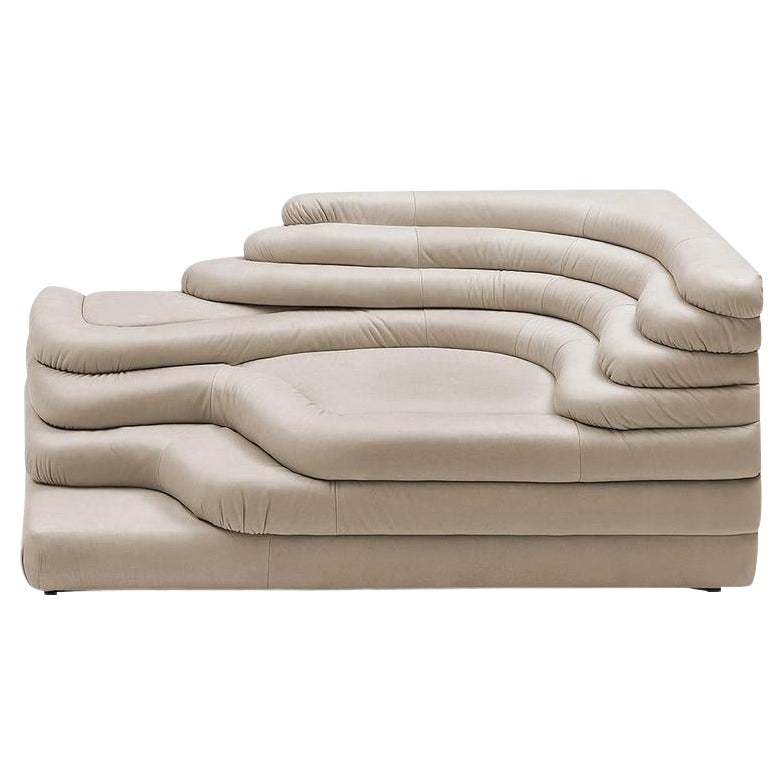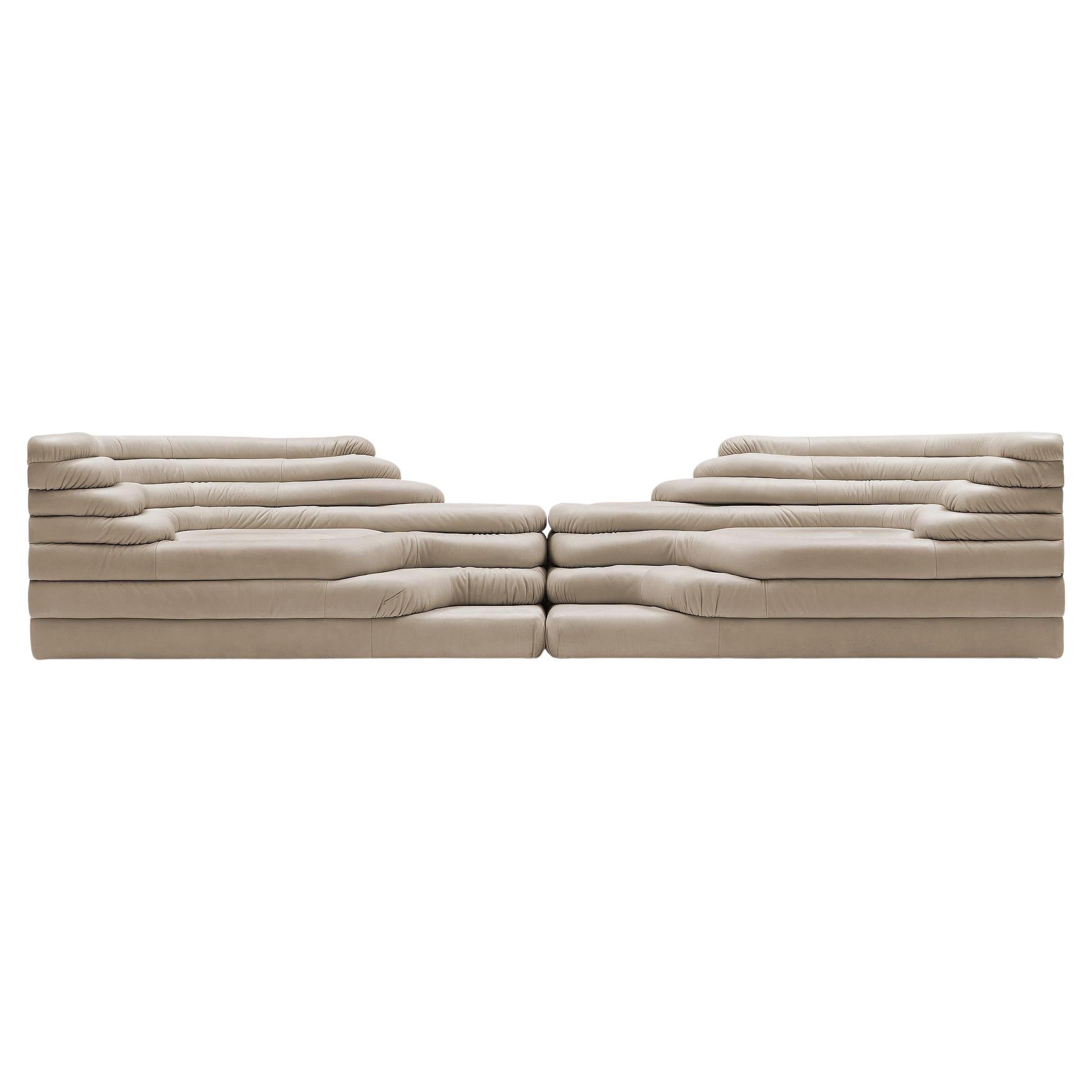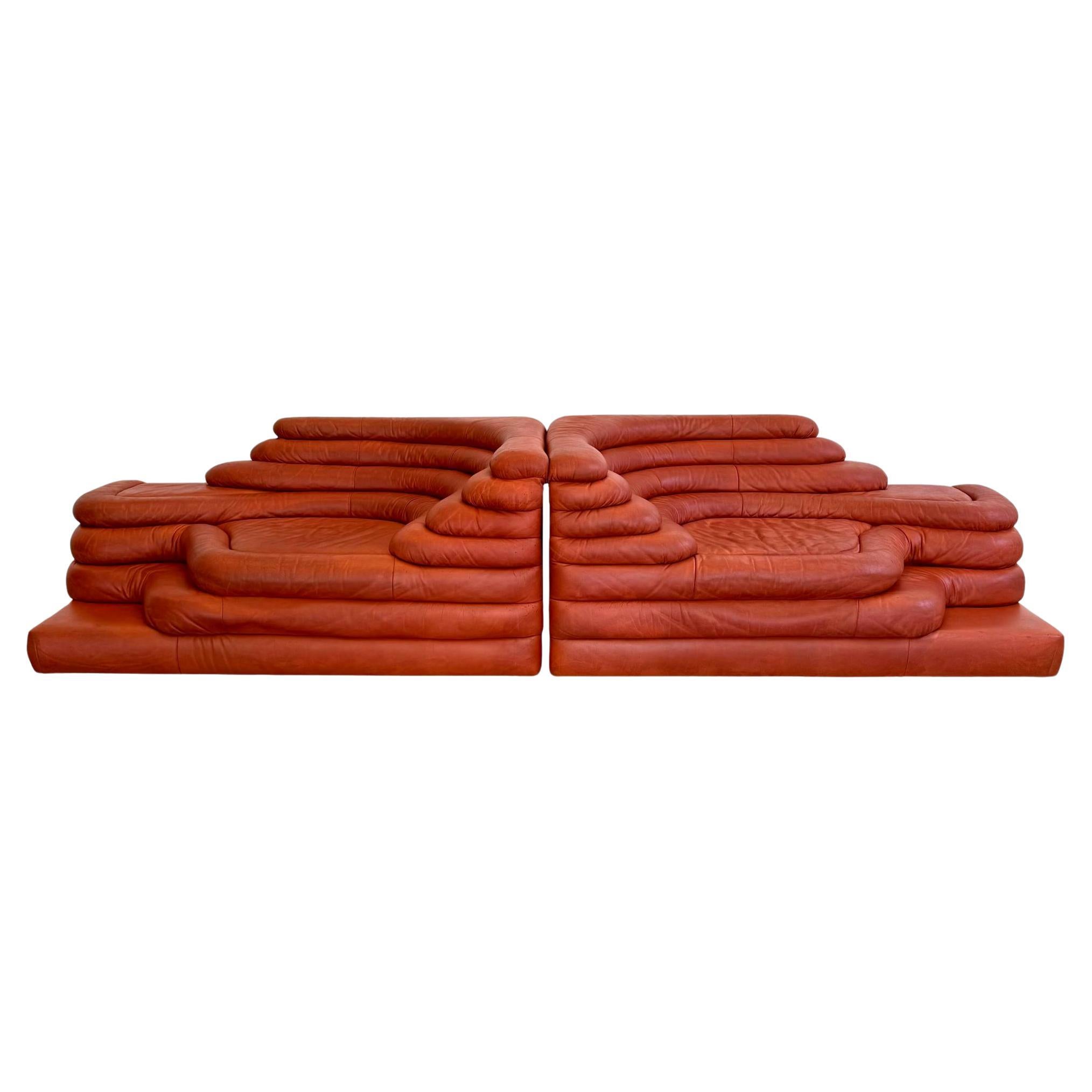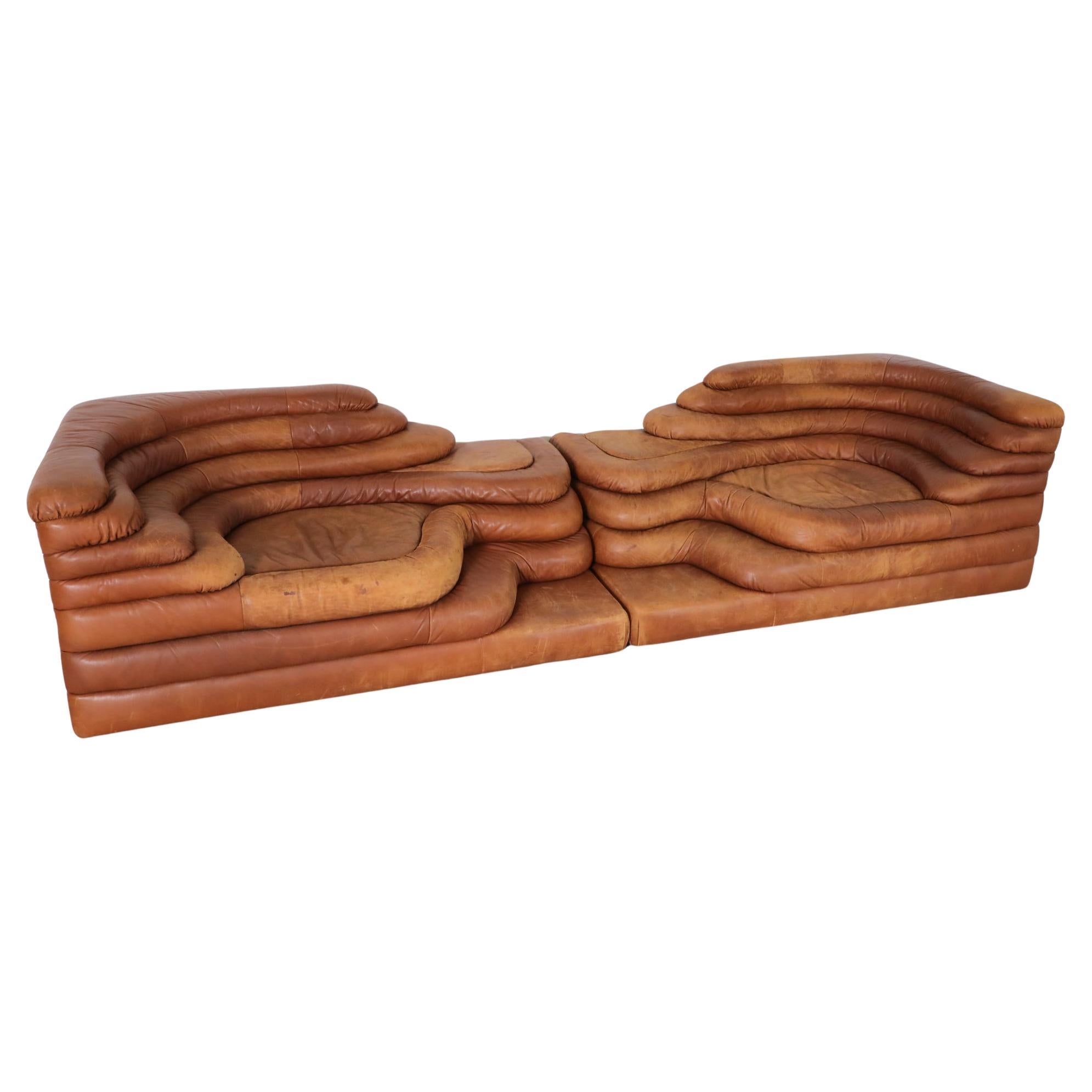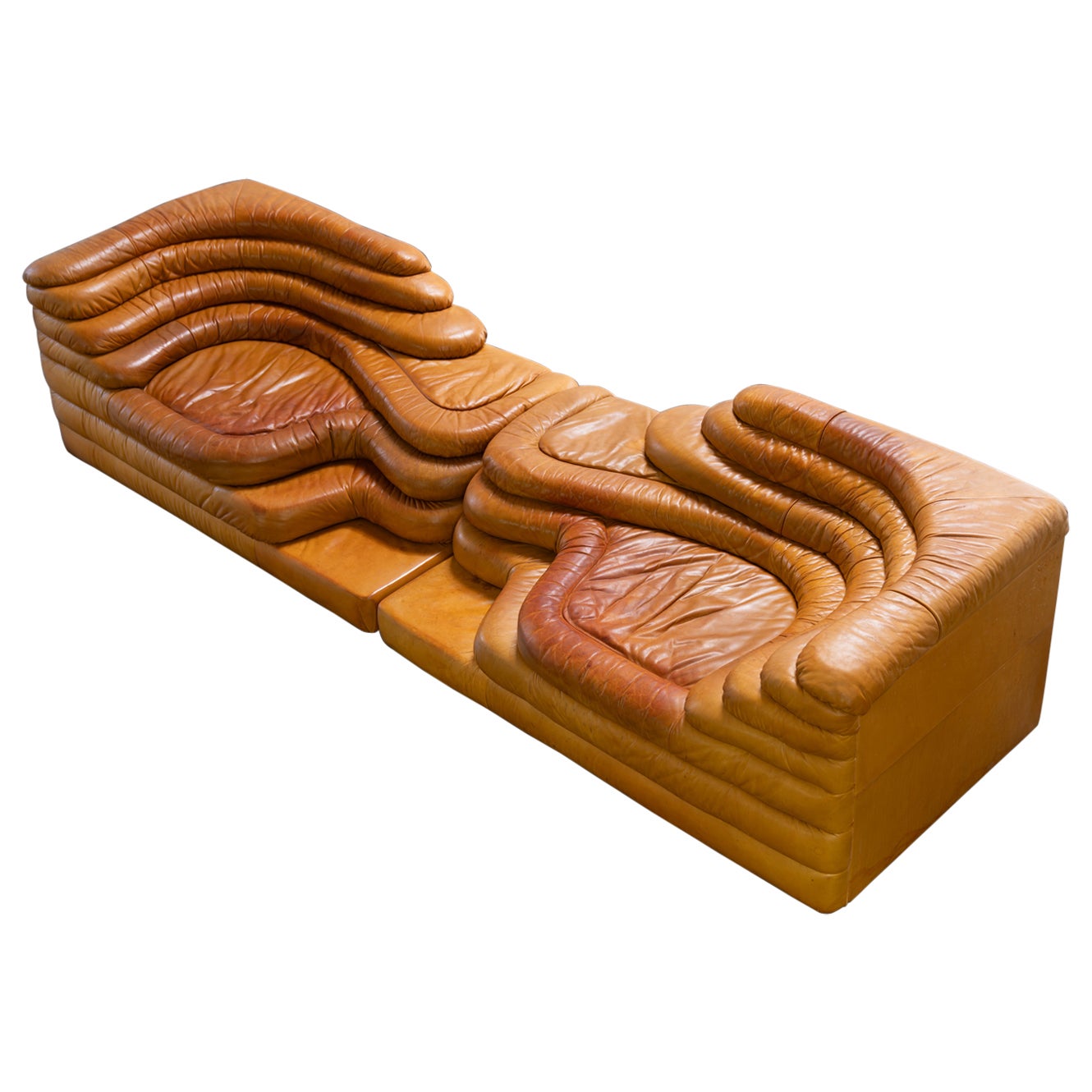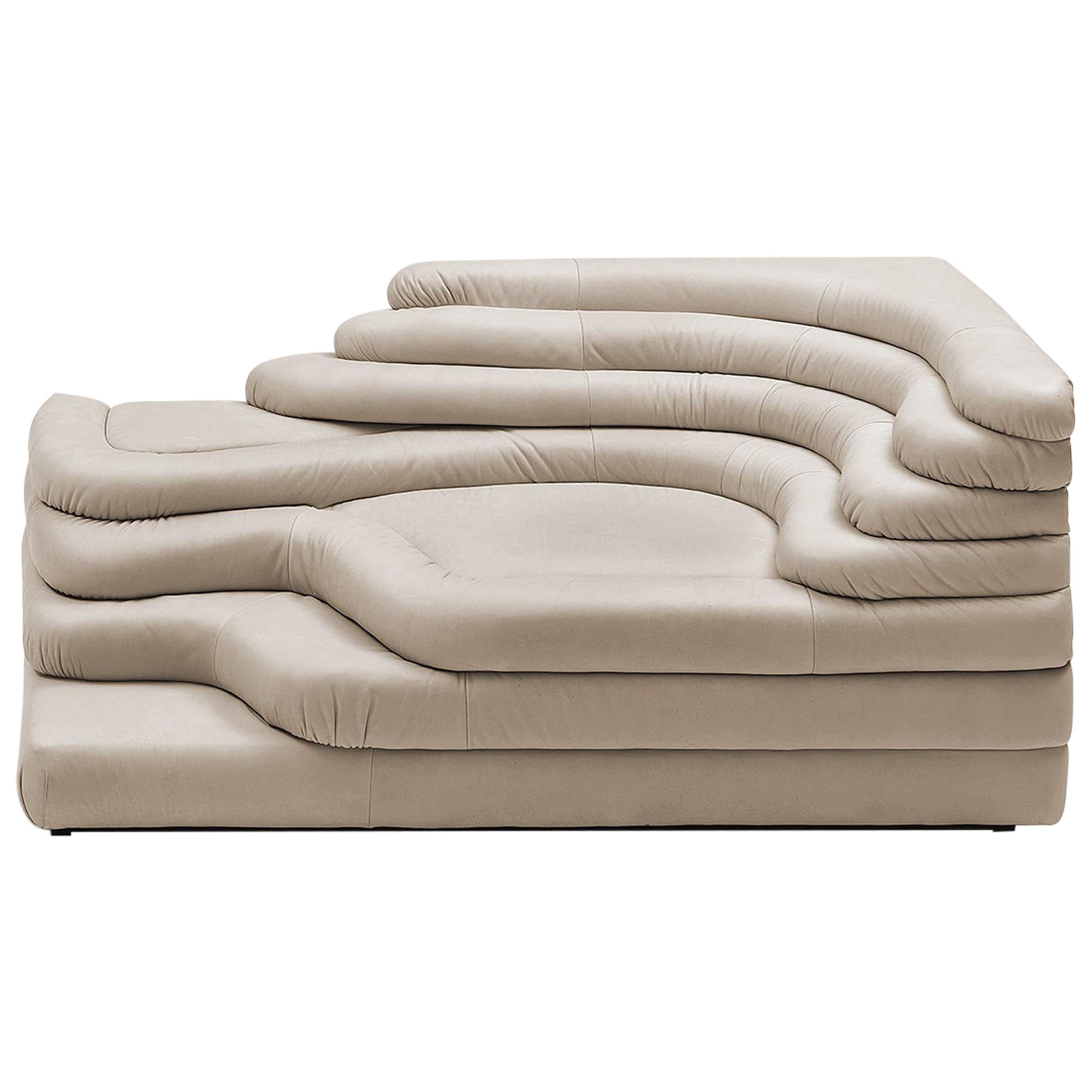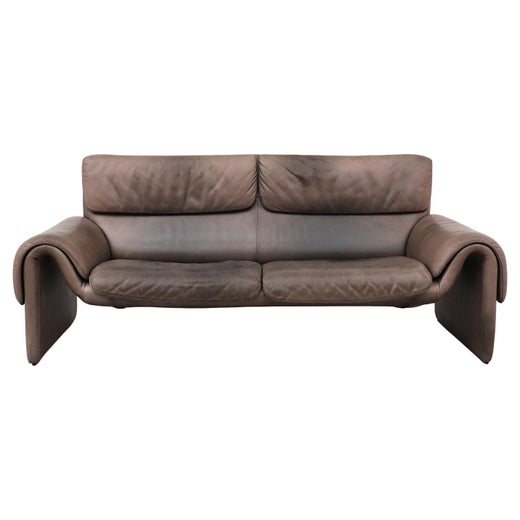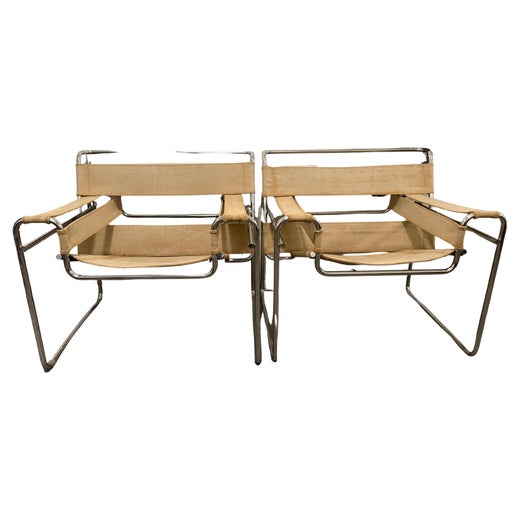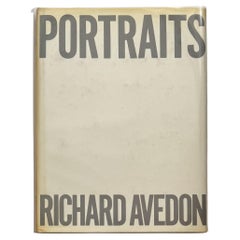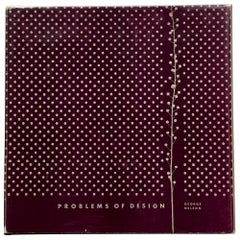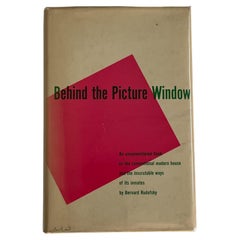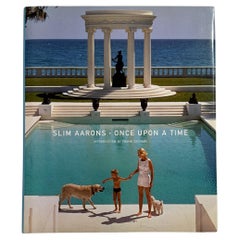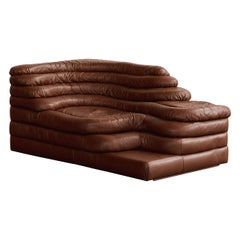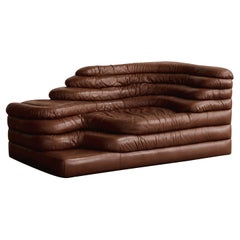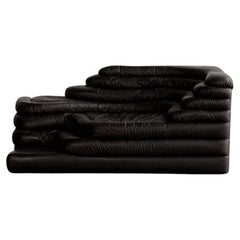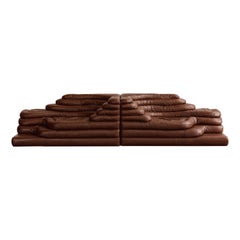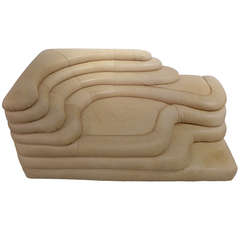
"Terrazza" Sofa by Ubald Klug
View Similar Items
"Terrazza" Sofa by Ubald Klug
About the Item
- Creator:
- Dimensions:Height: 27 in (68.58 cm)Width: 60 in (152.4 cm)Depth: 35 in (88.9 cm)
- Style:Mid-Century Modern (Of the Period)
- Materials and Techniques:
- Place of Origin:
- Period:
- Date of Manufacture:c. 1980's
- Condition:Wear consistent with age and use. In fine structural condition. The original leather has no cracks or tears, and is still supple. The overall uniform patina is marred by spots and small areas of discoloration, consistent with age and use.
- Seller Location:New York, NY
- Reference Number:1stDibs: LU82851182004
De Sede
A de Sede piece lends a strong personality to the room it occupies. One of the world’s most respected furniture design houses, de Sede’s quality Swiss craftsmanship has its foundation in a long history of making expertly designed saddles. Founded in 1965 to build on a successful family-run saddler’s workshop in Klingnau, Switzerland, de Sede now is a leading manufacturer of leather goods and furniture, including sofas, chairs and beds.
At the core of de Sede’s philosophy is a reverence for the complexity and beauty of handcrafted furniture in an age when mass-produced objects are the norm. Over the years, the atelier has built a name for itself in its modular furniture pieces, which are made using the highest quality leather upholstery. The sleek, elegant pieces incorporate functionality with beauty. Amongst their best-selling designs is the DS-600 introduced in 1972. Also known as the Non Stop sofa, it is a sensually curved, snaking modular sofa whose individual pieces can be zipped together to create multiple variations and arcs.
De Sede has collaborated with some of the world's finest design minds, enhancing the prestige and individuality of their products. Designers like Santiago Calatrava, Antonella Scarpitta, Stephan Hürlemann, Gordon Guillaumier and Philippe Malouin have all created pieces with the atelier. Ubald Klug’s 1974 DS-1025, also known as the Terrazza sofa, is an enduring favorite with its cascading levels of leather. In 2017, de Sede expanded its product line to include high-quality leather handbags, which are as thoughtfully designed and beautifully crafted as its furniture. De Sede AG is now part of the Volare Group AG and continues to handcraft its fine furniture and other goods from its factory in Klingnau.
Find authentic de Sede seating, tables and decorative objects today on 1stDibs.
Stendig Co.
Stendig Co. played a pivotal role in introducing modern European furniture to the American market, thanks to the business acumen of founder Charles Stendig.
Around 1950, the Brooklyn, New York–born Stendig (1924–2024) worked for Raymor, a purveyor of modern china and accessories that is best known for distributing designer Russel Wright’s American Modern line of ceramics. While at Raymor, Stendig focused on the company’s less popular pieces that were made in Italy and Scandinavia, recognizing their potential for the American market. In 1955, he left the company and decided to establish Stendig Co.
That year, a chance encounter with a Finnish trade representative led him to furniture company Asko — one of the largest companies operating in Scandinavia. Asko invited him and Joseph Carreiro, a professor at the Philadelphia College of Art (now the University of the Arts), to help refine their designs.
At Asko’s production facility in Finland, Stendig met several renowned Finnish designers such as Ilmari Tapiovaara, Tapio Wirkkala and Eero Aarnio, the iconic Ball chair creator. Stendig’s trip there was a success, and Stendig Co. began importing Finnish furniture to the United States.
In 1956, the first Stendig Co. showroom opened in Manhattan. A year later, during a trip to Zurich, Stendig came across a Bauhaus–inspired furniture store featuring pieces by Swiss designers Kurt Thut, Hans Eichenberger and Robert Haussmann, the store’s co-owner. Following a meeting with Haussmann, Stendig became the retailer’s exclusive U.S. distributor.
Throughout the late 1950s and early 1960s, Stendig Co. imported and sold furniture from influential European designers, including Swiss designer Bruno Rey, Italian architect and industrial designer Vico Magistretti and Hungarian-American architect and designer Marcel Breuer, creator of the Wassily lounge chair.
By the late 1960s, Stendig Co. moved its headquarters to an expansive space on Manhattan’s East Side and opened showrooms in Los Angeles, San Francisco and Chicago, each home to the company’s striking collection of mid-century European armchairs, sofas, dining room chairs, coffee tables and other furnishings. Stendig’s founder was by then representing Italian manufacturers Poltronova and Gufram and bringing revolutionary works of Italian Radical design to American shores.
In 1971, Charles Stendig sold the company to Burlington Industries. He retired in 1976. Today Stendig’s European imports are coveted by interior designers and vintage furniture collectors, and he will be forever known as the man who introduced modern European design to the United States.
Find a range of vintage Stendig Co. furniture on 1stDibs.
More From This Seller
View AllVintage 1970s American Mid-Century Modern Books
Paper
Vintage 1950s American Mid-Century Modern Books
Paper
Vintage 1950s American Mid-Century Modern Books
Paper
Early 2000s American Mid-Century Modern Books
Paper
Early 2000s American Mid-Century Modern Books
Paper
Vintage 1940s American Mid-Century Modern Books
Paper
You May Also Like
Vintage 1970s Swiss Mid-Century Modern Sofas
Leather
Vintage 1970s Swiss Mid-Century Modern Sofas
Leather
Vintage 1970s Swiss Mid-Century Modern Sofas
Leather
Vintage 1970s Swiss Mid-Century Modern Sofas
Leather
21st Century and Contemporary Swiss Mid-Century Modern Sofas
Leather, Wood
21st Century and Contemporary Swiss Modern Sofas
Leather
